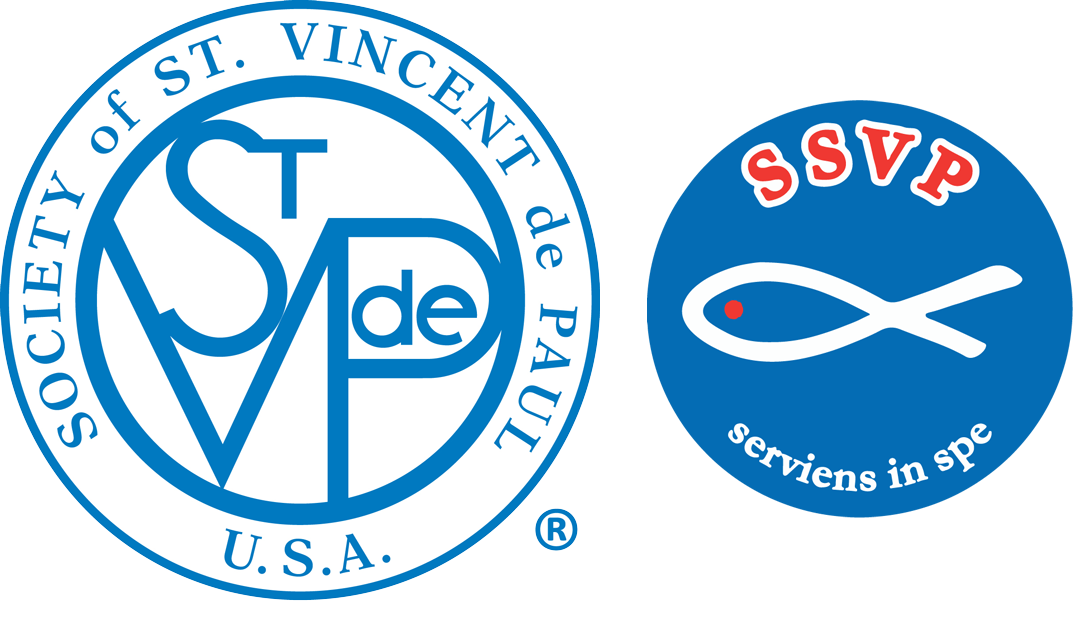Last Saturday, the Gospel reading for the day was Matthew 25:14-30. In that reading, Jesus tells the Parable of the Talents, illustrating the importance of utilizing and growing the gifts entrusted to us. In the Parable, a master entrusts his servants with talents (a form of money) before going on a journey. Two of the servants invest their talents and double their value, while the third buries his talent, fearing loss. Upon the master’s return, he rewards the first two servants and rebukes the third for his laziness.
While I’m not a theologian, I think that this Parable can provide us with great lessons in two areas that are very specific to the work of the Society of St. Vincent de Paul. One is in the area of Fundraising and Development, and the other is in the area of Membership Recruitment and Development.
This Parable is more than a lesson about personal responsibility and risk-taking; it has great teachings for charitable organizations like ours in our approach to fundraising and development. Like the talents in the parable, we are entrusted with resources that must be used effectively to fulfill their mission of serving those in need. The way we manage these resources can significantly impact our ability to achieve our goals and expand our reach. And like the talents entrusted to the servants, we are given resources — donations, grants, and volunteer support — that are meant to be invested wisely. To effectively serve those in need, we must not only manage our resources, but actively seek to grow them.
The lesson from the Parable is the importance of investing in fundraising and development. As the first two servants invested their talents to increase their value, we must view fundraising not as a mere necessity, but as a strategic investment in their future. This involves creating and implementing innovative fundraising strategies that go beyond traditional methods. Investment in professional development, donor relations, and marketing is crucial. It means allocating resources towards hiring skilled staff, investing in training programs, and utilizing data-driven approaches to understand and engage with donors effectively.
Investment in fundraising is akin to the wise investments made by the first two servants. It requires a strategic vision and a willingness to take calculated risks. Charitable organizations should view fundraising not just as a necessity, but as an opportunity to expand their reach and impact. This involves innovative strategies, robust development plans, and continuous engagement with donors. By investing in these areas, organizations like ours can multiply their resources and enhance their ability to make a difference.
Moreover, the goal of these investments is to better serve those in need. Just as the master in the Parable rewards the servants who actively increased their talents, donors and supporters are more likely to invest in organizations that demonstrate effective use of resources. This not only ensures the sustainability of the organization, but also maximizes its impact on the community.
In essence, the Parable of the Talents encourages us to see resources as opportunities for growth and impact. By investing wisely in fundraising and development, we can better fulfill our mission and serve those in need. The challenge, then, is to embrace the responsibility of these resources and use them to their fullest potential, ensuring that the fruits of our labor reflect our ultimate goal: compassionate service and community transformation.
Furthermore, effective fundraising and development require a proactive approach. The third servant’s inaction led to his downfall, a stark reminder of the consequences of neglect. Charitable organizations must be proactive in engaging with potential donors, developing strong relationships, and continually assessing and refining our strategies. Regular communication with supporters, transparent reporting on the impact of their contributions, and showing appreciation for their support can build trust and encourage continued investment.
Another important aspect of this Parable is the alignment of resources with the mission. The master praised the servants who made the most of their talents, suggesting that effectiveness is measured by how well resources are used to advance the mission. Charitable organizations should ensure that their fundraising efforts are directly aligned with their mission and goals. This involves clearly communicating how funds will be used and demonstrating tangible outcomes from donations. By showing donors the real impact of their contributions, we can foster a deeper sense of connection and commitment.
The second area, Membership Recruitment and Development, is not just about filling positions; it’s about fostering growth and ensuring sustainability. The third servant’s decision to bury his talent represents a failure to engage with the resources available, driven by fear or complacency. Similarly, organizations that neglect recruitment may find themselves stagnant, unable to adapt to new challenges, or missing out on innovative ideas. By continually bringing in new people, we can infuse our efforts with renewed passion, diverse skills, and innovative approaches, all of which are crucial for adapting to changing needs and achieving long-term success.
Moreover, recruitment should be seen as an investment in our future. The master in the Parable expects that the talents entrusted to the servants will grow. In the same way, we must view recruitment as an investment in our capacity to serve. New Vincentians bring not only immediate benefits — but also long-term potential. Whether it’s a new fundraiser with a talent for engaging donors, a volunteer with a passion for ENCOUNTER with those we serve, or a board member with strategic expertise, each new person contributes to our ability to make a greater impact.
Effective recruitment also involves communicating our vision and demonstrating the value of contributing to the organization’s mission. Just as the master’s expectations and rewards motivated the servants, making sure that the Society’s mission and vision are understood by those who join with us is critical to attracting and retaining the right individuals to SVdP.
Finally, the Parable underscores the necessity of managing resources wisely. The master praised the servants who used their talents to create more, indicating that success comes from effective and strategic use of what we have. In recruitment, this means not only attracting new talent, but also integrating and supporting them effectively within the organization. Proper onboarding, training, and engagement are crucial to ensuring that new recruits are empowered to contribute meaningfully and feel valued in their roles.
The Parable of the Talents is one that we probably listened to many times. But putting it in the context of our work at SVdP might give you a different perspective.
Peace and God’s blessings,
John




I want to thank God 🙏 for receiving this message and prayed for descernment to understand it in totality. I for one have been on both sides of the spectrum. I have been in need of charitable donations and have donated to people in need . I must admit being a giver does way more for my heart and spirit, then receiving. Nevertheless both are always needed in society. My favorite part about this reading the part about making investments for long term success. I think investments are always better than Charity, cause they carry more reassurance in having more resources to help not only the investor but the people in need. This reminds me of an investment idea of a company that GOD has allowed me to read up on and research. If my position in life every change again, for a split second I will make that investment and invite all the people of God who believe in giving as well as receiving along with me. Who knows maybe in the near future we could get together and sit down and discuss some of these ideas of investments that bring more charitable long lasting success and donations.
Thank you for this reading!